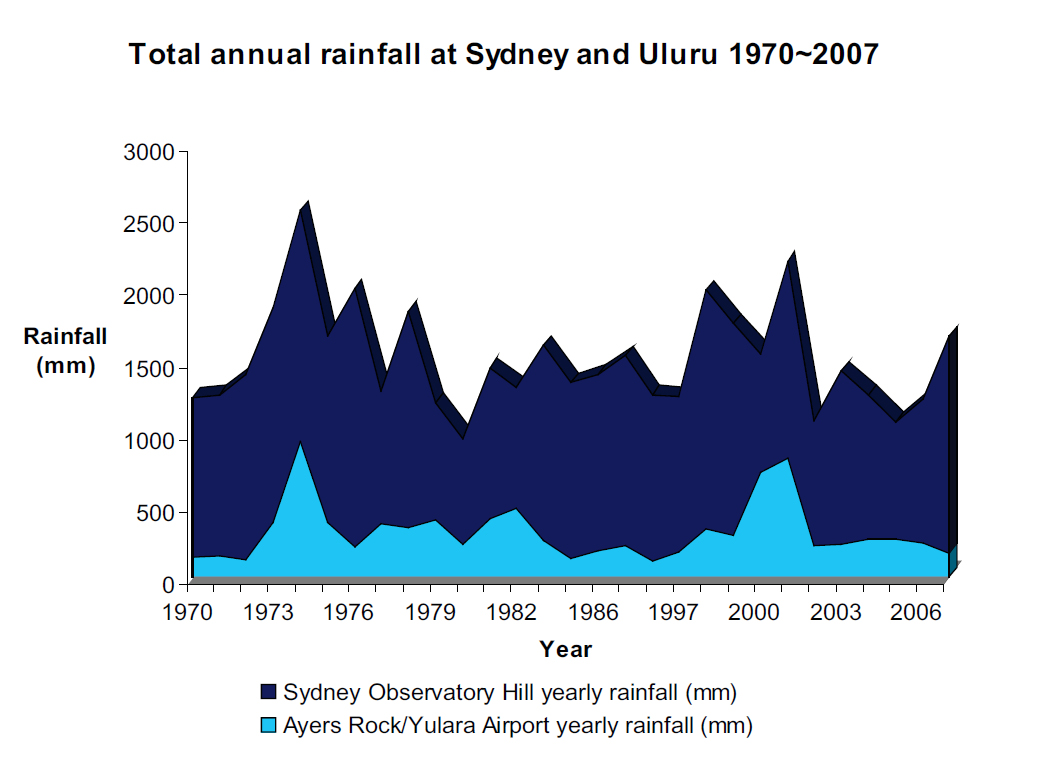9. Centre and Spread
Lesson
Is it about to rain?
Rainfall is crucial to the ongoing sustainability of the water cycle. However, as more carbon has gone into the atmosphere, rainfall patterns have changed dramatically and the world has experienced more floods and droughts.
Knowing when it’s about to rain isn't just important for the weather person on TV. Going for a run, putting the washing out, having a BBQ and planting crops are just some of the decision we make that are dependent on the weather. To help predict whether or not it’s going to rain, we must be able to interpret rainfall graphs like the one below.
Rainfall Graph (Source: http://www.environment.gov.au)
- In what year did Sydney experience its highest total annual rainfall?
- What was annual rainfall for Uluru in 2000?
- Which year has the largest difference in rainfall?
- Use the Internet to find last year’s annual rainfall in Australia.
- Use the Internet to find last year’s annual rainfall in Japan, Mexico and Brazil. Are they higher or lower than Australia?
- Go to the Bureau of Meteorology site and obtain rainfall history for your locality. What is the highest annual rainfall?
- Discuss the variation in rainfall, comparing excessive rain with drought periods. Can you find explanations for any patterns or anomalies in rainfall you have noticed?
- Compare average annual rainfall for different states.
- Find data for the average monthly rainfall over a year for at least two cities in different states. Are the driest months in a southern city the same as a city located further north? What is the difference in rainfall in the wettest month?
- What do seasonal rainfall patterns look like in a location far from the equator compared to locations close to the equator?
- What statistics, graphs and information can be used to look for long term patterns?
- How reliable is forecasting rain? How far into the future can rain be reliably predicted?